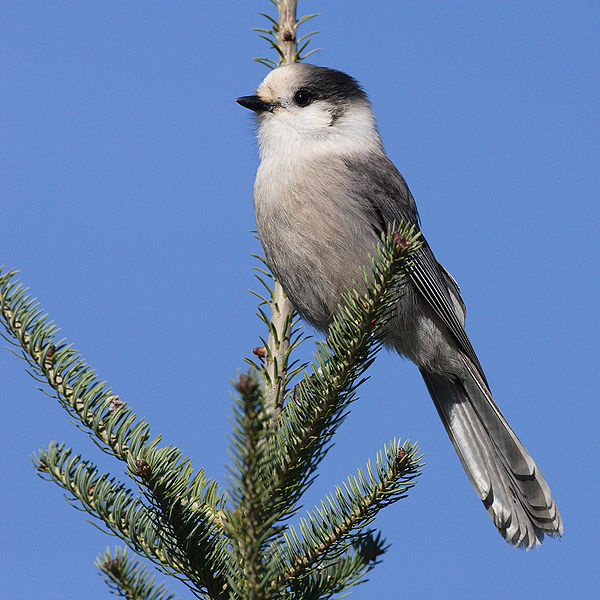If any one bird species could be said to represent the boreal forest, it would have to be the Grey Jay Perisoreus canadensis. These appealing little thieves are commonly known as whiskey jacks or camp robbers, and are found only in the boreal and sub-alpine forests of North America.
Non-migratory birds, Grey Jays occupy permanent territories, and nest early in the year while temperatures are well below freezing, and snow cover is at its highest. Clutches are initiated as early as February.
Fledging begins in April, weeks before the trees leaf-out and other migratory birds return. Like all Corvids, jays depend on previously hoarded food for winter survival and early breeding. During the summer and autumn, they place many thousands of food items in crevices throughout their territory.
Unfortunately for the Grey Jays, their preferred storage items are not seeds, but perishable items such as berries, insects, fungi and animal flesh. This raises the question of how long these stored items can last until the onset of freezing temperatures.
Many scientific studies have found a clear corelation between the warmer climate and nesting behaviour. While warm temperatures for longer periods may seem advantageous to bird populations, the result is the opposite for the Grey Jays. This species relies on natural refrigeration to preserve their perishable food hoards.
One field study in Algonquin Provincial Park, Manitoba, found that populations at the lower-latitude edge of the species’ range may be especially vulnerable to climate change, due in part to their choice of stored food items.
Researchers have found:
Warm autumns in recent years have arguably increased the perishablility of stored food, leading to delayed and less successful breeding and apparently to the ongoing decline of the study population.
The frequency of first-year breeders has increased as the population density has fallen, and poor reproductive success in these inexperienced breeders has accelerated the demographic demise. In saturated populations, grey jays rarely breed as yearlings. But in our declining study population, yearlings are increasingly the only individuals locally available to fill vacancies.
Growing up the boreal forest, Grey Jays were constant companions on any of our picnics or camping trips. Untold hours were spent trying to out-wit these intelligent birds to prevent our food from disappearing. My father told young children that if you could put salt on a whiskey jack’s tail, they would be your friend for life. Running after small grey birds with a salt shaker clutched in my little hand was undoubtedly my first great birding challenge. I remember it clearly to this day, possibly because I never succeeded.
It saddens me immeasurably to think of a boreal forest without whiskey jacks for future generations to chase with a salt shaker.
Source:
Climate Change and the demographic demise of a hoarding bird living on the edge
Thomas A Waite and Dan Strickland
Proc. R. Soc. B 2006 273, 2809-2813
Doi: 10.1098/rspb.2006.3667



